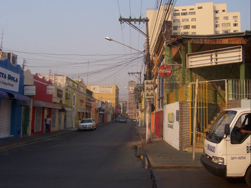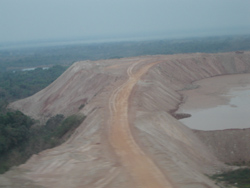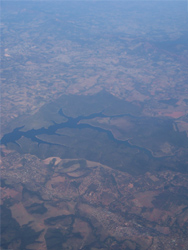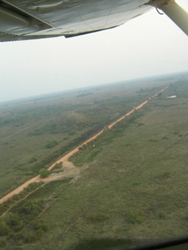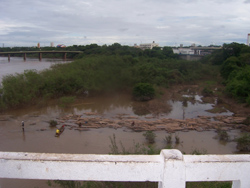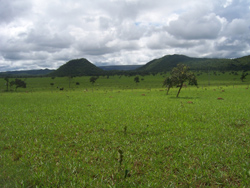Pressures
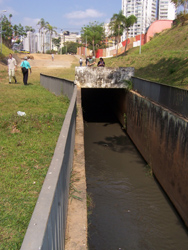 The main environmental pressures on the Cuiabá River are related to diffuse water pollution from agriculture and urban sewage and road runoff from the city of Cuiabá (the capital city of Mato Grosso State, with 800,000 inhabitants) and other neighbouring urban settlements.
The main environmental pressures on the Cuiabá River are related to diffuse water pollution from agriculture and urban sewage and road runoff from the city of Cuiabá (the capital city of Mato Grosso State, with 800,000 inhabitants) and other neighbouring urban settlements.
Additional pressures are related to the canalisation of the river system for large-scale navigation, mercury inputs from gold mining in the Poconé area, fish farming, deforestation to enhance cattle grazing in upstream plateaux and in wetland areas, hydroelectric damming and the construction of the Trans-pantaneira road across the Pantanal.
The conceptual model to be developed via the international network will serve as a means to explore the extent to which multiple pressures on the Cuiabá River have impacts on sustainability of water management and the ecological stability of wetland areas.
These impacts need to be understood from both a scientific and a socio-economic perspective. They include:
- Nutrient enrichment from sources external to the Pantanal (as opposed to internal cycling within the Pantanal), leading to impacts on trophic status and ecological quality of surface waters, especially in the dry season (Apr-Oct), when only residual water bodies are left functioning as vulnerable refuges for aquatic biodiversity. For example, over-enrichment with nutrients and sediment release of nutrients may lead to highly eutrophic conditions developing, especially in rivers acting as “backwaters” during the flooding season, and consequent reduced fishery stocks.
- Land use and climatic changes in the high plateaux (‘planalto’), transitional and wetland areas of the catchment, leading to changes in hydrology and flooding regimes. Previous work on the Taquari River (c.f. Jongman et al. - download pdf) has shown the strong impact of sediment on river flows and aquatic population. Intensification of the cultivatable areas of the ‘planalto’ exacerbates the transport of sediment and nutrients from this area.
- Navigational and flood management pressures influencing the retention and flow of water through the system. The Paraguay River is a major international waterway, but navigation is hampered by inadequate depth and seasonality of flows. These would be mitigated by canalisation, but at the risk of potential loss of many of the other wetland functions of the Pantanal, such as sustained water supply for a large proportion of the South-American continent.
Click on each image to enlarge

|
Updated: 23 Jan 2024, Content by: AV
|

